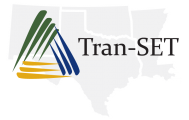Document Type
Data Set
Publication Date
7-2021
Abstract
Light-rail transit (LRT), which includes modern streetcars, trolleys, and heritage trolleys, is one of the fastest growing modes of public transportation in the United States. To reduce the cost and complexity of construction, most LRT systems have their tracks placed on city streets, in medians, or in separate at-grade rights-of-way with at-grade crossings. Operating light-rail vehicles (LRVs) along these alignments introduces new conflicts and increases the risk of collisions with vulnerable road users (VRUs) including pedestrians, bicyclists, and electric scooter riders. This study has two main objectives: (1) to review and evaluate the existing body of knowledge and the state of practice regarding safety of VRUs in LRT environments; and (2) to synthesize this information and package the results in a “Best Practices Resource Guide” and a companion “PowerPoint Presentation” for use in improving the safety of VRUs in existing LRT systems and advancing the professional capacity of transit workforce. Metropolitan Planning Organizations and State DOTs should also benefit from this resource information in the planning and design of new LRT systems. This report presents a wide range of physical, educational, and enforcement treatments for improving the safety of VRUs in LRT environments. The selection of a particular treatment for use at an LRT grade crossing or station should be based on an engineering study whose scope and complexity depend on local conditions. Factors that should be considered during device selection include 1) pedestrian‐LRV collision experience, 2) pedestrian volumes and peak flow rates, 3) train speeds, frequency of trains, number of tracks, and railroad traffic patterns, 4) sight distances available to pedestrians and LRV operators approaching the crossing, and 5) skew angle, if any, of the crossing relative to the LRT tracks.
Recommended Citation
Ahmed, S., & Bulut, R. (2021). Safety of Vulnerable Road Users (VRU's) in Light-Rail Transit (LRT) Environment. Retrieved from https://repository.lsu.edu/transet_data/121



Comments
Tran-SET Project: 20SAOSU06